Ditapis dengan
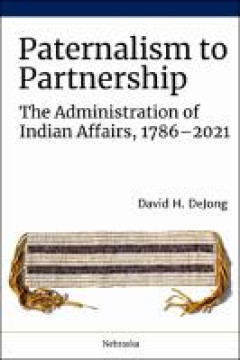
Paternalism to partnership :the administration of Indian affairs, 1786-2021
Paternalism to Partnership examines the administration of Indian affairs from 1786, when the first federal administrator was appointed, through 2021. David H. DeJong examines each administrator through a biographical sketch and excerpts of policy statements defining the administrator’s political philosophy, drawn from official reports or the administrator’s own writings. The Indian Offic…
- Edisi
- -
- ISBN/ISSN
- 9781496230584
- Deskripsi Fisik
- xvii, 476 p.
- Judul Seri
- -
- No. Panggil
- 323.1197 DEJ p
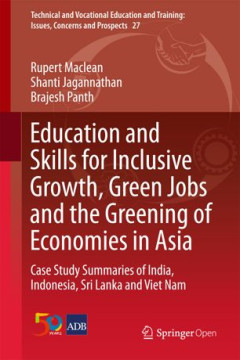
Education and skills for inclusive growth, green jobs and the greening of eco…
This book presents an overview of the main research findings and case studies concerning education and skills for inclusive growth, green jobs and the greening of economies. Focusing on India, Indonesia, Sri Lanka and Viet Nam, it discusses government and business sector responses to these issues and how Technical and Vocational Education and Training (TVET) systems and institutions are address…
- Edisi
- -
- ISBN/ISSN
- 9789811065590
- Deskripsi Fisik
- 198 p.
- Judul Seri
- -
- No. Panggil
- 658.514 MAC e

Education and skills for inclusive growth, green jobs and the greening of eco…
This book presents an overview of the main research findings and case studies concerning education and skills for inclusive growth, green jobs and the greening of economies. Focusing on India, Indonesia, Sri Lanka and Viet Nam, it discusses government and business sector responses to these issues and how Technical and Vocational Education and Training (TVET) systems and institutions are address…
- Edisi
- -
- ISBN/ISSN
- 9789811065590
- Deskripsi Fisik
- 198 p.
- Judul Seri
- -
- No. Panggil
- 658.514 MAC e

India and the patent war
India and the Patent Wars examines struggles over patents and access to medicine among pharmaceutical producers, activists and others under a new global intellectual property regime. In the past two decades, intellectual property rights have expanded throughout the globe creating a world in which protections for patents and copyrights have increased and a growing range of knowledge and practice…
- Edisi
- -
- ISBN/ISSN
- 9781501713972
- Deskripsi Fisik
- 202p.: ill.
- Judul Seri
- -
- No. Panggil
- 346.540486 HAL i
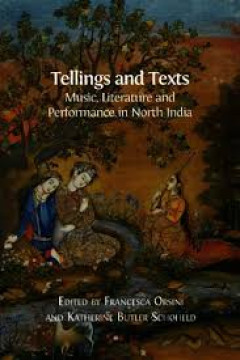
Tellings and texts:music, literature and performance in North India
- Edisi
- -
- ISBN/ISSN
- 9781783741052
- Deskripsi Fisik
- 566 p.; 23 cm.
- Judul Seri
- -
- No. Panggil
- 801.93 TEL t
- Edisi
- -
- ISBN/ISSN
- 9781783741052
- Deskripsi Fisik
- 566 p.; 23 cm.
- Judul Seri
- -
- No. Panggil
- 801.93 TEL t
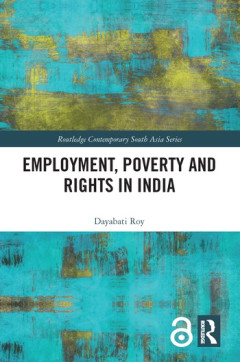
Employment, poverty and rights in India
In comparison to other social groups, India’s rural poor – and particularly Adivasis and Dalits - have seen little benefit from the country’s economic growth over the last three decades. Though economists and statisticians are able to model the form and extent of this inequality, their work is rarely concerned with identifying possible causes. Employment, Poverty and Rights in India analy…
- Edisi
- -
- ISBN/ISSN
- 9781138479586
- Deskripsi Fisik
- vii, 194p. : ill.
- Judul Seri
- -
- No. Panggil
- 331.120420954 ROY e

The Dutch and English East India Companies :diplomacy, trade and violence in …
A ground-breaking collection of essays that explores the place of the Dutch and English East India Companies in Asia and the nature of their interactions with Asian rulers, officials, merchants, soldiers and brokers. The Dutch and English East India Companies were formidable organizations that were gifted with expansive powers that allowed them to conduct diplomacy, raise armies and seize terri…
- Edisi
- -
- ISBN/ISSN
- 9789462983298
- Deskripsi Fisik
- 262p. : ill
- Judul Seri
- -
- No. Panggil
- 338.88 DUT d

Modes of philology in medieval South India
In Modes of Philology in Medieval South India, Whitney Cox rethinks the textual practices of a diverse collection of scholars and poets writing in Sanskrit, Tamil, and Prakrit in far southern India between the 11th and the 14th centuries CE.
- Edisi
- -
- ISBN/ISSN
- 9789004331679
- Deskripsi Fisik
- 208 p.; 22 cm.
- Judul Seri
- -
- No. Panggil
- 100 COX m
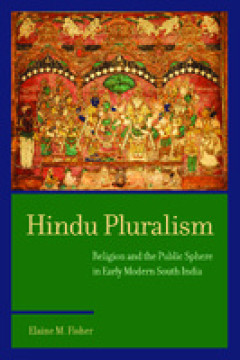
Hindu Pluralism:Religion and the Public Sphere in Early Modern South India
In Hindu Pluralism, Elaine M. Fisher complicates the traditional scholarly narrative of the unification of Hinduism. By calling into question the colonial categories implicit in the term “sectarianism,” Fisher’s work excavates the pluralistic textures of precolonial Hinduism in the centuries prior to British intervention. Drawing on previously unpublished sources in Sanskrit, Tamil, and T…
- Edisi
- -
- ISBN/ISSN
- 9780520966291
- Deskripsi Fisik
- XI, 300 p.
- Judul Seri
- -
- No. Panggil
- 294.509548 FIS h

The Light of Knowledge :Literacy Activism and the Politics of Writing in Sout…
Cowinner of the Society for Linguistic Anthropology’s Edward Sapir Book Prize Since the early 1990s hundreds of thousands of Tamil villagers in southern India have participated in literacy lessons and other events designed to transform them into active citizens with access to state power. These efforts are part of a movement known as the Arivoli Iyakkam (the Enlightenment Movement), one of th…
- Edisi
- -
- ISBN/ISSN
- 9780801452024
- Deskripsi Fisik
- XX, 250 p.
- Judul Seri
- -
- No. Panggil
- 379.24095482 COD l

Early Buddhist Transmission and Trade Networks :Mobility and Exchange Within …
This book examines catalysts for Buddhist formation in ancient South Asia and expansion throughout and beyond the northwestern Indian subcontinent to Central Asia by investigating symbiotic relationships between networks of religious mobility and trade.
- Edisi
- -
- ISBN/ISSN
- 9789004194588
- Deskripsi Fisik
- XVIII, 371 p.
- Judul Seri
- -
- No. Panggil
- 294.37209021 NEE e
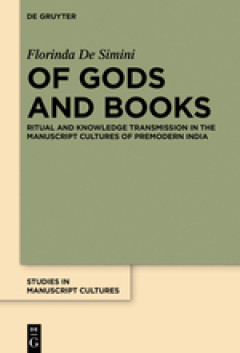
Of Gods and Books :Ritual and Knowledge Transmission in the Manuscript Cultur…
India has been the homeland of diverse manuscript traditions that do not cease to impress scholars for their imposing size and complexity. Nevertheless, many topics concerning the study of Indian manuscript cultures still remain to receive systematic examination. Of Gods and Books pays attention to one of these topics - the use of manuscripts as ritualistic tools. Literary sources deal quite ex…
- Edisi
- -
- ISBN/ISSN
- 9783110478815
- Deskripsi Fisik
- XI, 417 p.
- Judul Seri
- -
- No. Panggil
- 294.592 DES g

Transforming food systems for a rising India
This open access book examines India’s economic development, agricultural production, and nutrition through the lens of a “Food Systems Approach (FSA).” Despite economic progress, regional inequality, food insecurity and malnutrition persist. Simultaneously, recent trends in obesity and micro-nutrient deficiency indicate a future public health crisis. This book explores the challenges a…
- Edisi
- -
- ISBN/ISSN
- 9783030144098
- Deskripsi Fisik
- xxiv, 368p. : ill.
- Judul Seri
- -
- No. Panggil
- 363.85610954 TRA t
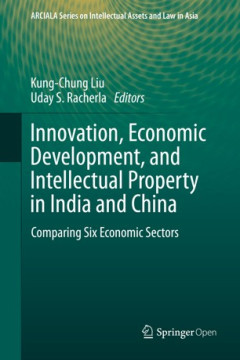
Innovation, economic development, and intellectual property in India and Chin…
This open access book analyses intellectual property and innovation governance in the development of six key industries in India and China. These industries are reflective of the innovation and economic development of the two economies, or of vital importance to them: the IT Industry, the film industry, the pharmaceutical industry, plant varieties and food security, the automobile industry, and…
- Edisi
- -
- ISBN/ISSN
- 9789811381027
- Deskripsi Fisik
- xvii, 514p. : ill.
- Judul Seri
- -
- No. Panggil
- 346.54048 INN i

Indic manuscript cultures through the ages. material, textual, and historical…
This collection of essays explores the history of the book in pre-modern South Asia looking at the production, circulation, fruition and preservation of manuscripts in different areas and across time. Edited by the team of the Cambridge-based Sanskrit Manuscripts Project and including contributions of the researchers who collaborated with it, it covers a wide range of topics related to South As…
- Edisi
- -
- ISBN/ISSN
- 9783110543100
- Deskripsi Fisik
- xviii, 783 p.; 22 cm.
- Judul Seri
- -
- No. Panggil
- 091 IND i
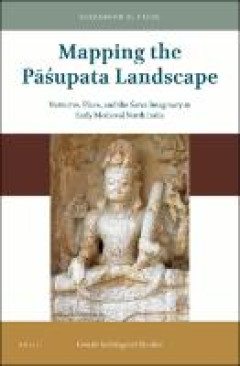
Mapping the pāśupata landscape :narrative, place, and the saiva imaginary i…
In Mapping the Pāśupata Landscape Elizabeth A. Cecil presents a spatial and material history of the Pāśupata tradition and examines the formation of a Śaiva religious landscape in Early Medieval India. Readership: All interested in the history of Hinduism, and particularly the worship of the god Śiva, in premodern India; scholars of early medieval history and society in South Asia, and th…
- Edisi
- -
- ISBN/ISSN
- 9789004424425
- Deskripsi Fisik
- XIII, 271 p.
- Judul Seri
- -
- No. Panggil
- 704.948945 CEC m

Dutch ships in tropical waters:the development of the Dutch East India Compan…
The end of the 16th century saw Dutch expansion in Asia, as The Dutch East India Company (the VOC) was fast becoming an Asian power, both political and economic. By 1669, the VOC was the richest private company the world had ever seen. This landmark study looks at perhaps the most important tool in the Company' trading - its ships. In order to reconstruct the complete shipping activities of the…
- Edisi
- -
- ISBN/ISSN
- 9789048501236
- Deskripsi Fisik
- 217 p. : ill. (some col.), col. maps ; 30 cm.
- Judul Seri
- -
- No. Panggil
- 387.50959809032 PAR d

Emerging market economies and financial globalization:argentina, brazil, chin…
In the past, foreign shocks arrived to national economies mainly through trade channels, and transmissions of such shocks took time to come into effect. However, after capital globalization, shocks spread to markets almost immediately. Despite the increasing macroeconomic dangers that the situation generated at emerging markets in the South, nobody at the North was ready to acknowledge the pro-…
- Edisi
- -
- ISBN/ISSN
- 9781783086740
- Deskripsi Fisik
- pages cm.
- Judul Seri
- -
- No. Panggil
- 330 STA e

Malarial subjects:empire, medicine and nonhumans in British India, 1820-1909
Malaria was considered one of the most widespread disease-causing entities in the nineteenth century. It was associated with a variety of frailties far beyond fevers, ranging from idiocy to impotence. And yet, it was not a self-contained category. The reconsolidation of malaria as a diagnostic category during this period happened within a wider context in which cinchona plants and their most va…
- Edisi
- -
- ISBN/ISSN
- 9781316771617
- Deskripsi Fisik
- xvi, 332p.: ill.
- Judul Seri
- -
- No. Panggil
- 616.936200954 DEB m

Excavations at Paithan, Maharashtra :transformations in early historic and ea…
This book reports on excavations at Paithan in India revealed the development of two early Hindu temples from the 4th century to the 9th: the key formative phase of Hinduism. The temples started as small shrines but were elaborated into formal temples. In relation to these changes, the excavations revealed a sequence of palaeobotanical and palaeofaunal evidence that give insight into the econom…
- Edisi
- -
- ISBN/ISSN
- 9783110653540
- Deskripsi Fisik
- XX, 386 p.
- Judul Seri
- -
- No. Panggil
- 956.94 KER e
 Karya Umum
Karya Umum  Filsafat
Filsafat  Agama
Agama  Ilmu-ilmu Sosial
Ilmu-ilmu Sosial  Bahasa
Bahasa  Ilmu-ilmu Murni
Ilmu-ilmu Murni  Ilmu-ilmu Terapan
Ilmu-ilmu Terapan  Kesenian, Hiburan, dan Olahraga
Kesenian, Hiburan, dan Olahraga  Kesusastraan
Kesusastraan  Geografi dan Sejarah
Geografi dan Sejarah